(Page créée avec « Preparing the jars: ») |
|||
| Ligne 73 : | Ligne 73 : | ||
|Step_Picture_00=Conserves_de_légumes_pasteurisés_1.JPG | |Step_Picture_00=Conserves_de_légumes_pasteurisés_1.JPG | ||
|Step_Picture_01=Conserves_de_légumes_pasteurisés_2.JPG | |Step_Picture_01=Conserves_de_légumes_pasteurisés_2.JPG | ||
| − | |Step_Title= | + | |Step_Title=Preparing the jars: |
|Step_Content=* Se laver soigneusement les mains ainsi que les bocaux et leur couvercle | |Step_Content=* Se laver soigneusement les mains ainsi que les bocaux et leur couvercle | ||
* Placer une casserole avec un fond d'eau sur le feu jusqu'à mijotage | * Placer une casserole avec un fond d'eau sur le feu jusqu'à mijotage | ||
Version du 25 mai 2018 à 08:51
Description
Preserve your surplus of fruit and vegetables by means of pasteurisation
Introduction
This tutorial has been created in collaboration with Claire Yobé, an expert in pasteurisation with many years of experience in the field.
The aim is to easily preserve surplus fruit and vegetables for long-term storage, whether from your vegetable patch (in Summer for example), or because you have bought more than you need.
Key facts on food wastage:
- 1/3 of food produced around the world goes off or is wasted
- In France, 50% of waste happens at home
- A person in France wastes 20kg of food per year
- 19 % of fruit and 31% of vegetables are wasted, making these the produce we waste the most
What is pasteurisation?
Pasteurisation is a process used to preserve food. It consists in heating food to 80°C before being bottled or preserved in jars, followed by cooling.
How is it possible to preserve food by means of pasteurisation?
By heating fruit and vegetables to 80°C, a large proportion of pathogenic micro-orgnanisms are destroyed. Placing food in containers at this temperature drives oxygen out and prevents the remaining pathogens from multiplying.
What kind of foods can be preserved through pasteurisation?
All kinds of fruit and vegetables can be easily preserved by means of pasteurisation. However, this method cannot be applied to meat or fish since 100% of the pathogens present need be destroyed, which can be achieved through sterilisation.
What nutritional value do pasteurised foods have?
Cooking clearly diminishes nutritional value as it reduces the vitamin and protein content in food.
Pasteurisation is one of the heat treatment processes which least reduces nutritional value as the food is not heated to very high temperatures, contrary to sterilisation which can reach temperatures of up to 120°C.
How should we consume pasteurised foods?
You can consume as much pasteurised fruit and as many pasteurised vegetables as you wish. Once the container has been opened, it should be stored in the fridge and the contents eaten within 7 days.
Are there any risks involved with pasteurisation?
As with all heat treatment methods for food preservation, it is vital that the jar or tin be airtight. If air penetrates the container, pathogenic micro-organisms may develop.
This tutorial focuses on fruit and vegetables only where risk is very low. However, if in doubt and any suspicious smells or colours arise, do not hesitate to throw the preserve away.
Matériaux
- Surplus fruit and vegetables
- Water
Outils
- Jars with screw-on or sealed lids
- Saucepans
- Kitchen thermometer reaching 100°C
- Kitchen gloves
- Wide neck funnel
Étape 1 - Preparing the fruit and vegetables:
- Peel and wash the fruit and vegetables to be pasteurised thoroughly
- Whether from a recipe of your choice (like ratatouille, compote, puréed fruit or veg, fruit in syrup etc...) or cut into pieces in water, place the fruit or veg in a saucepan over heat.
- Heat until brought to a simmer
Étape 2 - Preparing the jars:
- Se laver soigneusement les mains ainsi que les bocaux et leur couvercle
- Placer une casserole avec un fond d'eau sur le feu jusqu'à mijotage
- Rouler le bocal dans l'eau chaude puis le positionner debout dans la casserole toujours sur petit feu
Remarque: La mise du bocal dans l'eau chaude permet de chauffer le verre pour assurer que tout le contenu reste à 80°C durant le remplissage
Étape 3 - Mise en conserve
- S'assurer d'avoir les mains bien propres
- A l'aide du thermomètre, valider que la préparation culinaire est à 80°C
- Si besoin à l'aide de l'entonnoir, remplir au maximum le bocal chaud
- Fermer le bocal et visser le cas échéant, en forçant au maximum la fermeture
- Déposer le bocal sur une table, couvercle vers le bas et laisser refroidir
Remarques:
1) La validation de la température à 80°C et la fermeture parfaite des bocaux sont 2 étapes essentielles de la pasteurisation
2) Le positionnement du bocal, couvercle vers le bas, permet de valider la bonne étanchéité à l'air (si ça fuit, la conserve n'est pas bonne) et permet de laisser le couvercle se rétracter par le refroidissement dans de bonnes conditions pour une fermeture parfaite
Étape 4 - Stockage
- Stocker les conserves dans un endroit frais à l'abris de la lumière
Remarque: Les conserves pasteurisées peuvent se garder ainsi plusieurs mois / années
Étape 5 - Consommation
- Consommer à volonté
- Un fois ouvert, conserver le bocal ouvert au réfrigérateur et consommer le contenu dans la semaine
Notes et références
- Vidéo tuto réalisée par Camille Duband et notice écrite réalisée par Pierre-Alain Lévêque pour le Low-tech Tour, Avril 2018
- Connaissances et savoir-faire transmis par Claire Yobé
- ARTE, Le gaspillage alimentaire en 7 chiffres clés
- Wikipedia, pasteuristation
Yes
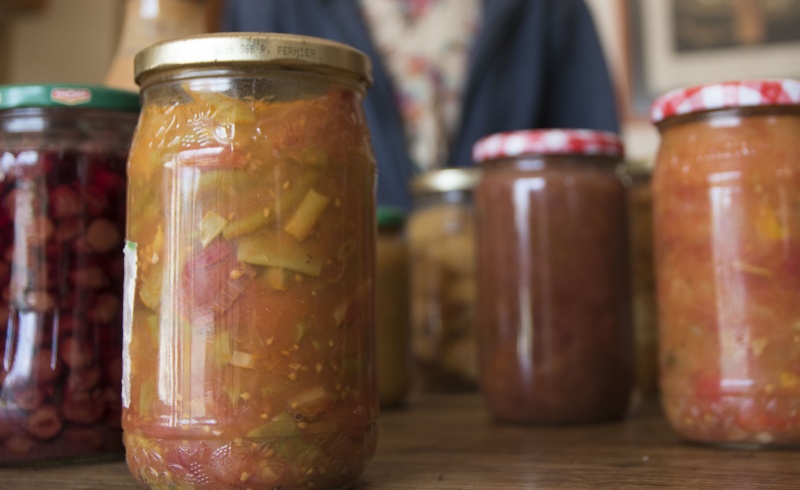
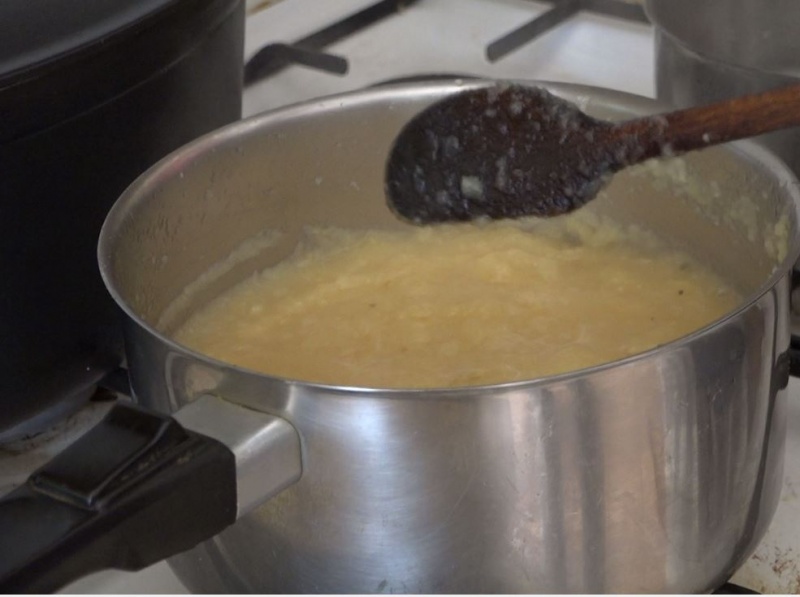
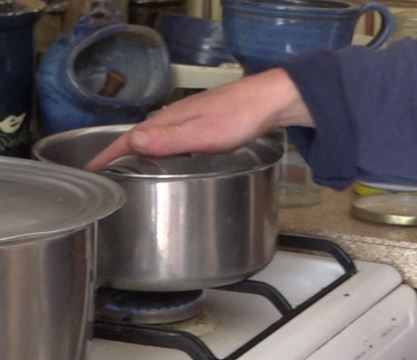
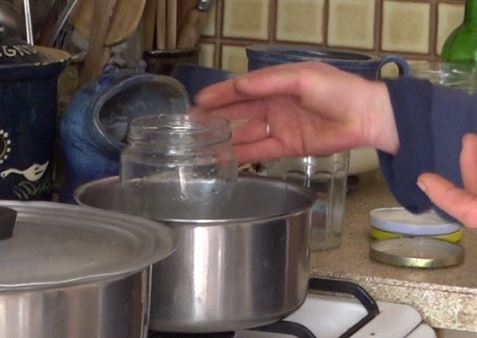
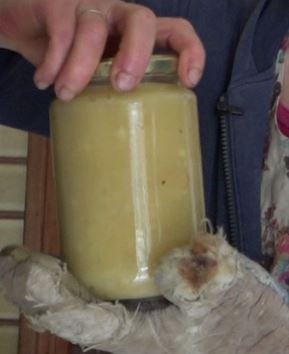
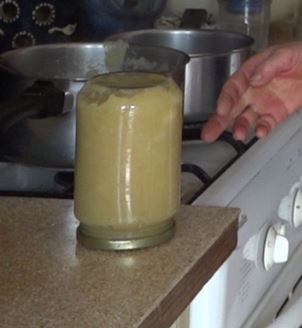
 Français
Français English
English Deutsch
Deutsch Español
Español Italiano
Italiano Português
Português